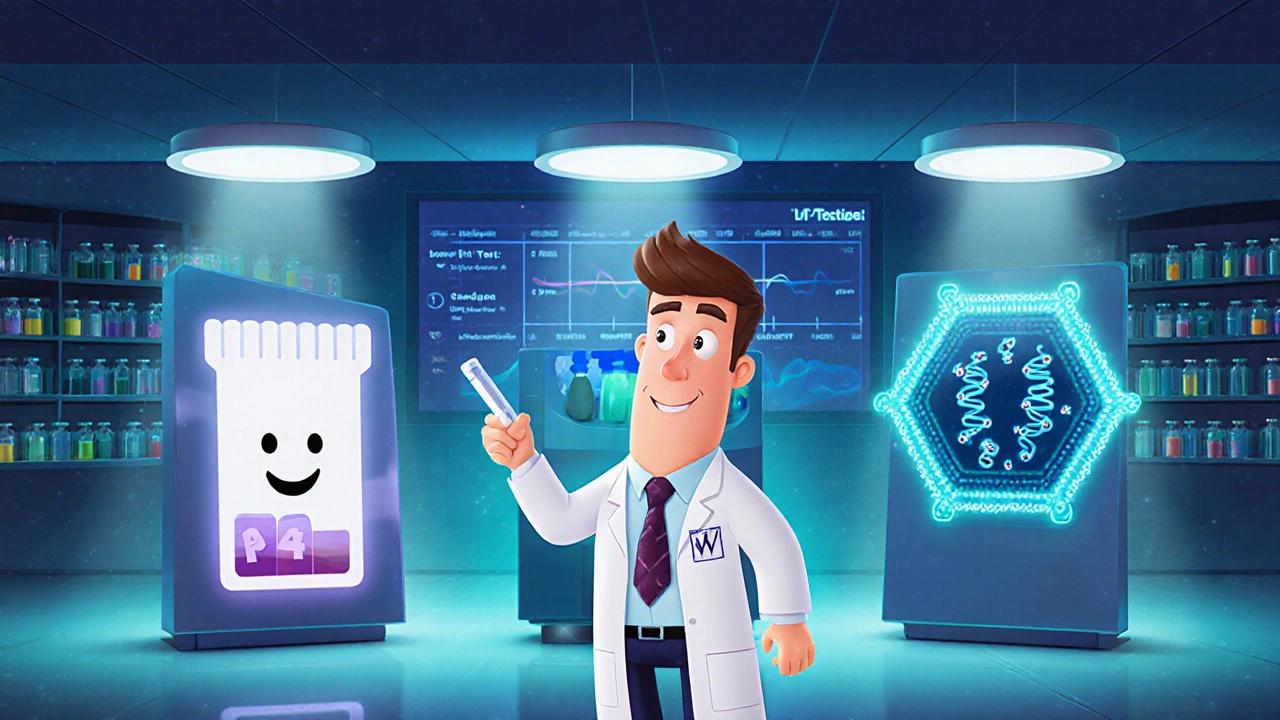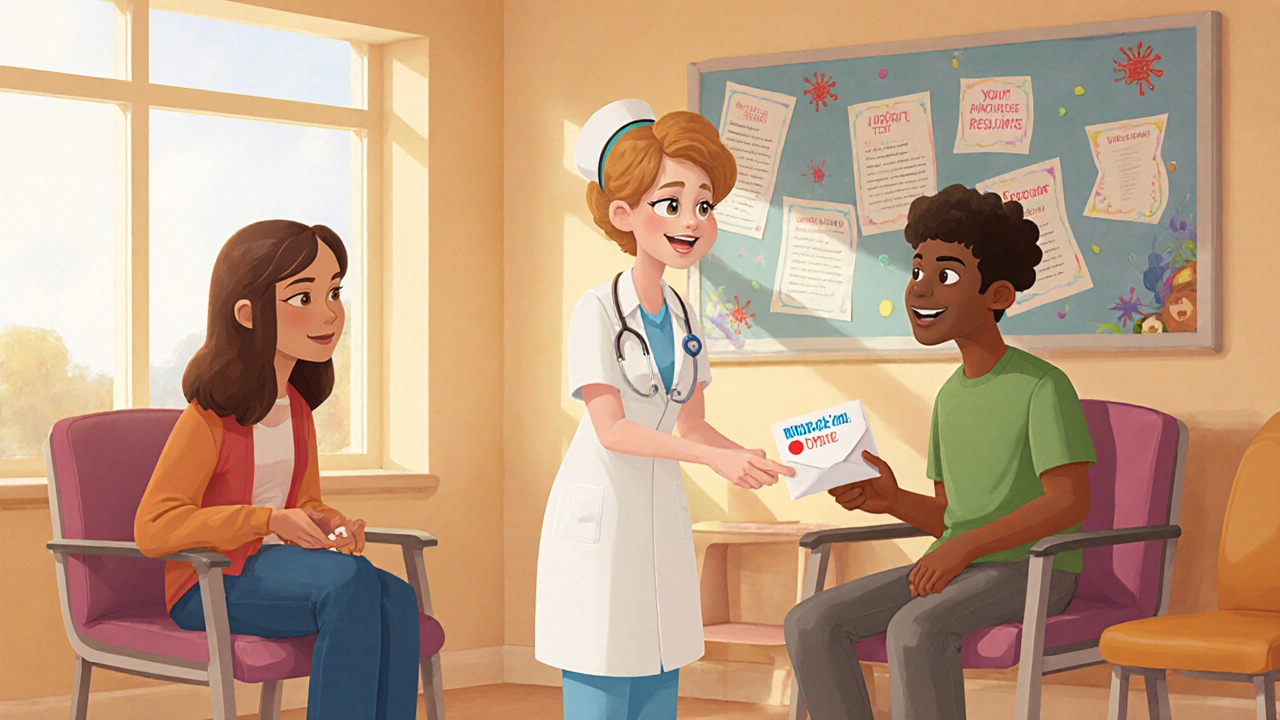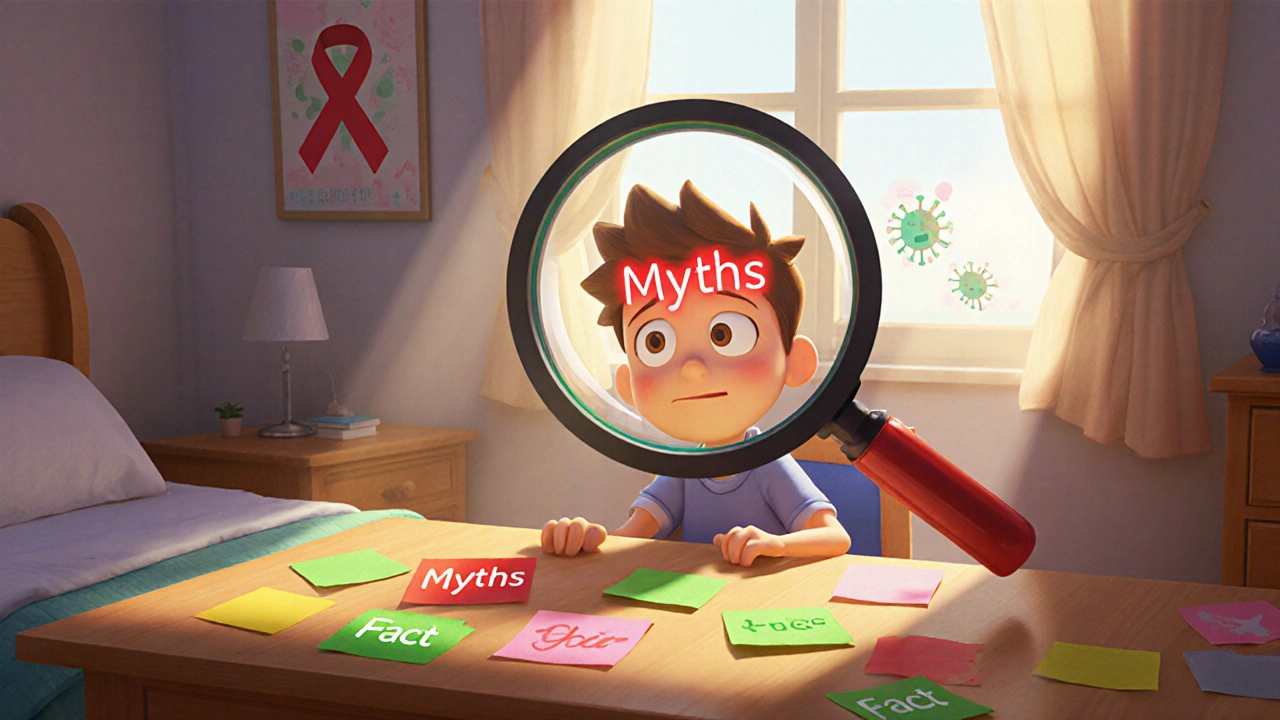HIV Test Window Period Calculator
How long should you wait before getting an HIV test?
This calculator shows the recommended time to wait after potential exposure to get an accurate HIV test result based on the type of test you take.
There's a lot of HIV testing myths floating around, and it's time to set the record straight.
What are HIV-1 and HIV-2?
When we talk about the HIV-1/2 test is a diagnostic tool that looks for infection with either HIV‑1 or HIV‑2 viruses, it helps to know the difference between the two viruses.
HIV-1 is the most common strain worldwide, responsible for the majority of new infections. It tends to progress faster if left untreated.
HIV-2 is rarer, found mostly in West Africa. It usually spreads slower and often requires different testing thresholds.
How Do HIV Tests Work?
Three main technologies dominate the market:
- Antibody test looks for your body’s immune response to HIV. It’s the most common rapid test.
- Antigen test detects the p24 protein that appears early after infection, shortening the window period.
- Nucleic acid test (NAT) amplifies viral RNA or DNA, catching infection within days.
| Test Type | Detects | Typical Window Period | Sensitivity | Cost (USD) |
|---|---|---|---|---|
| Antibody | Host antibodies | 3‑12 weeks | 99.7% | $20‑$40 |
| Antigen | p24 protein | 2‑6 weeks | 98‑99% | $30‑$60 |
| NAT | Viral RNA/DNA | 7‑10 days | 99.9% | $100‑$150 |
Myth #1: A Negative Test Means You’re Safe Forever
Wrong. A single negative result only tells you about the time you were tested. If you were exposed within the window period - the time it takes for the body to produce detectable markers - the test could miss a recent infection. Retesting after the recommended interval (usually 4 weeks for antibody tests) is essential.
Myth #2: All HIV Tests Detect Both HIV‑1 and HIV‑2
Not true. Some rapid antibody kits are optimized for HIV‑1 and may miss HIV‑2 unless they’re specifically designed for dual detection. Always ask the provider whether the test is “HIV‑1/2 combo.”

Myth #3: Home Test Kits Are Unreliable
Home kits approved by the CDC (Centers for Disease Control and Prevention) and the WHO (World Health Organization) meet the same performance standards as clinic tests. The key is using them correctly and confirming a positive result with a lab‑based test.
Myth #4: If You’re HIV‑Positive, You’ll Always Show Symptoms Quickly
HIV can stay asymptomatic for years. The virus attacks the immune system silently, and only later do you notice flu‑like symptoms or opportunistic infections. That’s why regular testing is the only way to know.
Myth #5: You Can’t Get Tested Anonymously
Many community clinics, pharmacies, and online services offer anonymous testing. In New Zealand, the HIV Rapid Test Service lets you receive results without giving your name, and the same model is used in many countries.

How Accurate Are Modern HIV Tests?
Modern tests boast >99% sensitivity and specificity when performed after the appropriate window period. Sensitivity means the test correctly identifies infected people; specificity means it correctly clears those who are not infected. False‑positive results are rare but can happen, which is why a confirmatory test (often a NAT) is standard practice.
Practical Tips to Avoid False Results
- Know the window period for the test you’re taking.
- Schedule a follow‑up test if you had a recent high‑risk exposure.
- Tell the tester about any recent vaccinations or flu shots - they can sometimes cause temporary false‑positives in antibody tests.
- Use only FDA‑approved or nationally certified kits.
- If you test positive at home, seek a lab‑based confirmatory test within 48 hours.
Where to Get Tested and What to Expect
In most countries, you can walk into a public health clinic, a pharmacy, or use a vetted online service. The process usually looks like this:
- Check‑in: You’ll fill a brief health questionnaire.
- Sample collection: A finger prick for rapid tests or a blood draw for lab tests.
- Result delivery: Rapid tests give results in 20‑30 minutes; lab tests take 1‑5 days.
- Post‑test counseling: Regardless of result, you’ll receive information on next steps, prevention, and treatment options.
Both the CDC and WHO recommend that anyone who’s sexually active, uses injection drugs, or has had a known exposure get screened at least once a year.
Quick Checklist Before You Test
- Know if the kit is HIV‑1/2 combo.
- Check the test’s expiration date.
- Confirm you’re past the window period for your exposure.
- Plan for a confirmatory test if the result is positive.
- Bring a list of any recent medications or vaccinations.
Can a rapid test detect HIV‑2?
Only if the test is labeled as a dual HIV‑1/2 rapid test. Some older kits target HIV‑1 alone and can miss HIV‑2 infections.
What is the earliest time I can get a reliable result?
A nucleic acid test (NAT) can detect HIV as early as 7‑10 days after exposure. Antigen tests catch it around 2‑6 weeks, while antibody tests need 3‑12 weeks.
If I test negative today, should I test again?
If you’ve had a recent exposure (within the past month), retest after the appropriate window period-usually at 4 weeks for antibody tests and 2 weeks for antigen or NAT.
Are home HIV tests confidential?
Yes. Approved home kits do not require you to provide personal details. Positive results must still be followed up with a lab‑based confirmatory test, which can also be done confidentially.
What should I do after a positive result?
Contact a healthcare provider right away for a confirmatory test and discuss treatment options. Modern antiretroviral therapy (ART) can suppress the virus to undetectable levels, dramatically improving health and preventing transmission.


Kyle Garrity
October 21, 2025 AT 20:56Thanks for putting together this clear rundown. I appreciate how you broke down the window periods for each test type. It really helps people understand why a single negative isn’t a blanket clearance. Knowing the difference between HIV‑1 and HIV‑2 can prevent a lot of confusion. Keep the info coming, it’s valuable for everyone.
brandon lee
October 21, 2025 AT 21:06Nice summary bro.
Joshua Pisueña
October 21, 2025 AT 21:16Yo this guide is fire‑ it tells you exactly which test catches the virus early and why the NAT is king for a 7‑day window. Also shoutout to the home kit tip – people need to know they can test in privacy and still get legit results. Stay safe and keep spreading the word.
bill bevilacqua
October 21, 2025 AT 21:26Honestly, this whole "modern tests >99%" hype is just propaganda, America needs to stop importing foreign tech, we have our own standards, and these so‑called "CDC approved" kits are just a way to keep the government control, the people should demand homebrew solutions, not trust some lab, especially when they keep changing the numbers, it's all a con.
Ralph Barcelos de Azevedo
October 21, 2025 AT 21:36While we’re on the topic, it’s essential to remember that personal responsibility matters more than convenient testing. If you’re out there having unprotected encounters, you owe it to your partners to stay informed. This isn’t just a medical issue, it’s a moral one. Ignorance isn’t an excuse.
Peter Rupar
October 21, 2025 AT 21:46Listen up, people: this post nails the facts, but there’s a deeper layer you need to get. First, the myth that a negative result means you’re safe forever is straight-up dangerous – the virus can hide in your system for weeks before any marker shows up, so a single test isn’t a free pass. Second, you have to understand that not all tests are created equal; many rapid kits are designed only for HIV‑1, and they’ll miss HIV‑2 entirely if the label doesn’t say ‘combo.’ Third, the window period varies wildly between test types – NAT catches it in 7‑10 days, antigen around 2‑6 weeks, and antibodies need 3‑12 weeks. Fourth, even the best tests aren’t immune to false positives – that’s why confirmatory testing with a NAT is the gold standard. Fifth, don’t forget the importance of anonymity – many clinics and online services let you get results without giving your name, which removes a huge barrier for people scared of stigma. Sixth, the cost differences matter; if you’re on a tight budget, the $20‑$40 antibody test is affordable but you might need a follow‑up NAT for certainty. Seventh, remember that vaccinations or recent flu shots can temporarily skew antibody results, so always mention recent immunizations to your tester. Eighth, home kits are legit only if they’re FDA‑approved – otherwise you risk inaccurate readings and wasted money. Ninth, if you get a positive home result, you must get a lab‑based confirmatory test within 48 hours; delays can affect early treatment options. Tenth, early treatment with modern ART can suppress the virus to undetectable levels, dramatically cutting transmission risk. Eleventh, regular testing isn’t a one‑time thing; the CDC and WHO recommend at least annual screening for sexually active people, more often if you have high‑risk exposures. Twelfth, keep a list of any medications you’re taking, because certain drugs can interfere with test accuracy. Thirteenth, make sure the test isn’t expired – expired kits lose sensitivity. Fourteenth, use only certified kits, not DIY hacks promising “instant results.” Fifteenth, after a positive result, counseling is mandatory – you deserve support, not judgment. Finally, spread this knowledge. The more people understand the nuances, the fewer myths will persist, and the better we can all protect ourselves and each other.
Nikita Shue
October 21, 2025 AT 21:56Great points above, Ralph – adding to that, for anyone in regions where HIV‑2 is more prevalent, double‑check that the test you pick explicitly states dual detection. It’s a small step that makes a huge difference in catching an infection that might otherwise slip through.
Heather McCormick
October 21, 2025 AT 22:06Oh, look, another "expert" telling us the truth about testing. As if the government ever cared about our privacy before. Sure, anonymity exists, but only if you trust the system that tracks every purchase and shipment. Real freedom comes when we ditch all these corporate‑approved kits and start making our own. Yeah, good luck with that.